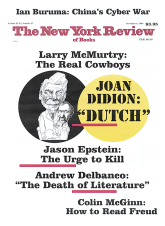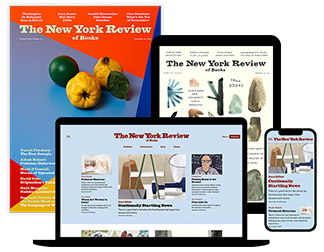The death of the cowboy as a vital figure has been one of my principal subjects, and yet I’m well aware that killing the myth of the cowboy is like trying to kill a snapping turtle: no matter what you do to it, the beast retains a sluggish life. The cowboy has long since been absorbed into the national bloodstream, but is no longer quite so front-and-center in the popular culture. The Marlboro man is a last survival of the Western male in the heroic mode. In Marlboro ads the West is always the mountain West, the high, rich country that runs from Jackson Hole around to Sheridan, Wyoming, where the Queen of England sometimes goes to buy her racehorses. The West of those ads is the familiar, poeticized, pastoral West—the Marlboro men themselves need to do little other than light up. Perhaps they swing their ropes at a herd of horses that are thundering toward a corral.
Horses only, mind you—never cattle. The image of horses running is perhaps the most potent image to come out of the American West: cattle running produces, to most eyes, a far less appealing picture. The fact is, cows are hard to poeticize—even longhorns. They tend to seem ugly, stupid, and slow, which they are; images of cows are unlikely to loosen the pocketbooks of smokers in Japan or elsewhere where the Marlboro man and his horses are seen, and they are seen everywhere. No image out of the American West is so ubiquitous, and they are images that are entirely male—Marlboro country is a woman-free zone. Sometimes there is a cabin in the snow, with a wreath of smoke coming out of the chimney. The running horses may be making for this cabin. But if there is a woman in there, cooking for her man, we don’t see her: we just see the rugged male, riding the high country forever.
Few cowboys, though, smoke Marlboros. The image is rural but the consumption is mainly urban. One reason for this is that the Marlboro man is so commanding an image that the dusty, slightly lumpy real cowboys don’t feel they can aspire to it. The mere fact that the real cowboys have to wrestle smelly cattle all day removes them from the world of godlike horsemen. The level of romanticization needed to sustain the Marlboro image is extremely high: it needs the prettiest country in the whole West, plus horses, to keep it working.
Another indicator that the cowboy myth is gradually being absorbed into suburban culture is the current smoothing out of country music. Garth Brooks, who will soon have sold more records than the Beatles, is at the head of this trend. His songs are music for the suburbs and the freeways, songs to be listened to in the cabs of the newer, more expensive pickups; it is genteel music, domestic music, as opposed to the loner’s music of someone like Hank Williams.
What the Western experience has demonstrated perhaps more clearly than any other is the astonishing speed with which things can change. There were so many buffalo—fifty million, by some estimates—that no one could really envision their disappearance, yet it took barely twenty years to eliminate them. Similarly, the cowboys who went north up the plains to the Yellowstone couldn’t quite at first imagine that the unfenced purity of the Great Plains would be fenced and cut into ranches in less than half their lifetime. A young cowboy of 1866 saw the virgin land as one great expanse, stretching all the way from Mexico to Canada; such a cowboy would have had to be very prescient to imagine that most of that land would be cut up and fenced before he was even middle-aged. But many cowboys lived to see that happen, and it left them with a confused, unhappy, bittersweet feeling, unable to forget the paradise they helped destroy. They could never either recover it or forget it. Some may have realized that they themselves were only insignificant pawns in the economic drama of the West.
This Issue
November 4, 1999





